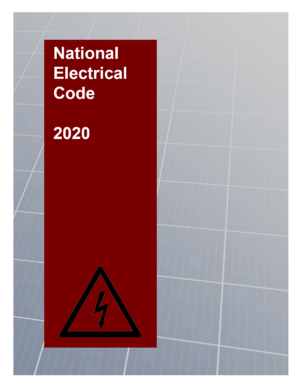Difference between revisions of "Electrical codes"
| Line 4: | Line 4: | ||
The electrical codes of many countries also include a section that deals with photovoltaics and solar installations, but in many locations the code does inadquately addresses small-scale battery based systems, is completely unintelligible to the majority of the people designing/installing these systems or simply does not address them at all. In many places this is combined with a lack of a permitting process and a lack of enforcement to create an environment in which many PV systems are designed and installed improperly due to ignorance or in a race to the bottom on cost. If in a location where there is insufficient guidance from the electrical code, the United States NEC combined with the best practices that have been developed in the off-grid sector in the US serve as a solid approach in most locations. OSSP follows this approach. | The electrical codes of many countries also include a section that deals with photovoltaics and solar installations, but in many locations the code does inadquately addresses small-scale battery based systems, is completely unintelligible to the majority of the people designing/installing these systems or simply does not address them at all. In many places this is combined with a lack of a permitting process and a lack of enforcement to create an environment in which many PV systems are designed and installed improperly due to ignorance or in a race to the bottom on cost. If in a location where there is insufficient guidance from the electrical code, the United States NEC combined with the best practices that have been developed in the off-grid sector in the US serve as a solid approach in most locations. OSSP follows this approach. | ||
| + | |||
| + | More information on choosing properly tested and certified components for a PV system can be found at [[Equipment certifications|equipment certifications.]] | ||
Revision as of 10:53, 18 October 2020
There are millions of small-scale battery based systems installed globally and the impact of improper installations can have real impacts on safety and quality of life for these end users. All countries have some type of electrical code that sets basic standards for how electrical systems should be designed, what components should be used and how they should be installed. Electrical codes should be followed insofar as is possible as their primary purpose is to prevent fires and to protect people. Electrical accidents - fires and electrocutions - typically occur because equipment is not installed properly, is not rated to be used for a particular purpose, is subjected to currents or voltages that exceed its rating or is installed in an inappropriate environment.
The electrical codes of many countries also include a section that deals with photovoltaics and solar installations, but in many locations the code does inadquately addresses small-scale battery based systems, is completely unintelligible to the majority of the people designing/installing these systems or simply does not address them at all. In many places this is combined with a lack of a permitting process and a lack of enforcement to create an environment in which many PV systems are designed and installed improperly due to ignorance or in a race to the bottom on cost. If in a location where there is insufficient guidance from the electrical code, the United States NEC combined with the best practices that have been developed in the off-grid sector in the US serve as a solid approach in most locations. OSSP follows this approach.
More information on choosing properly tested and certified components for a PV system can be found at equipment certifications.
